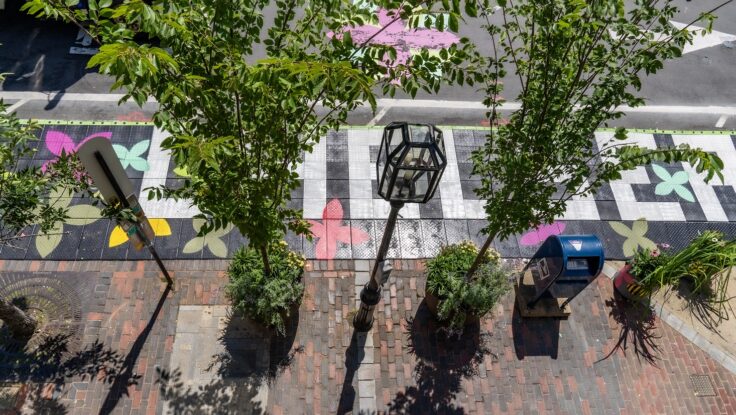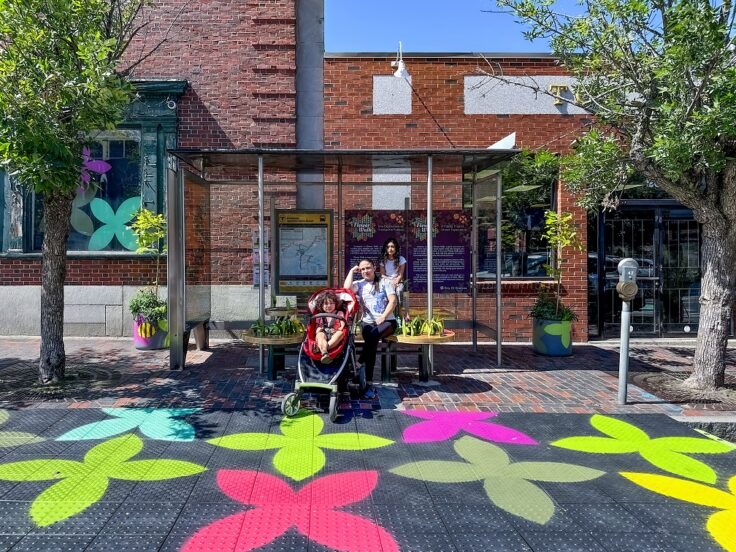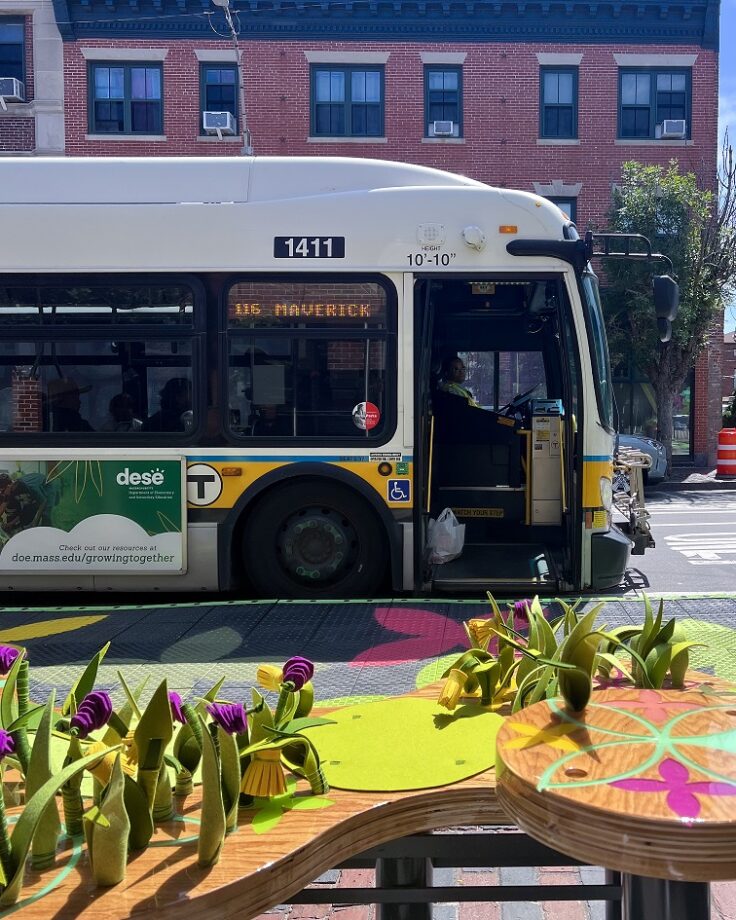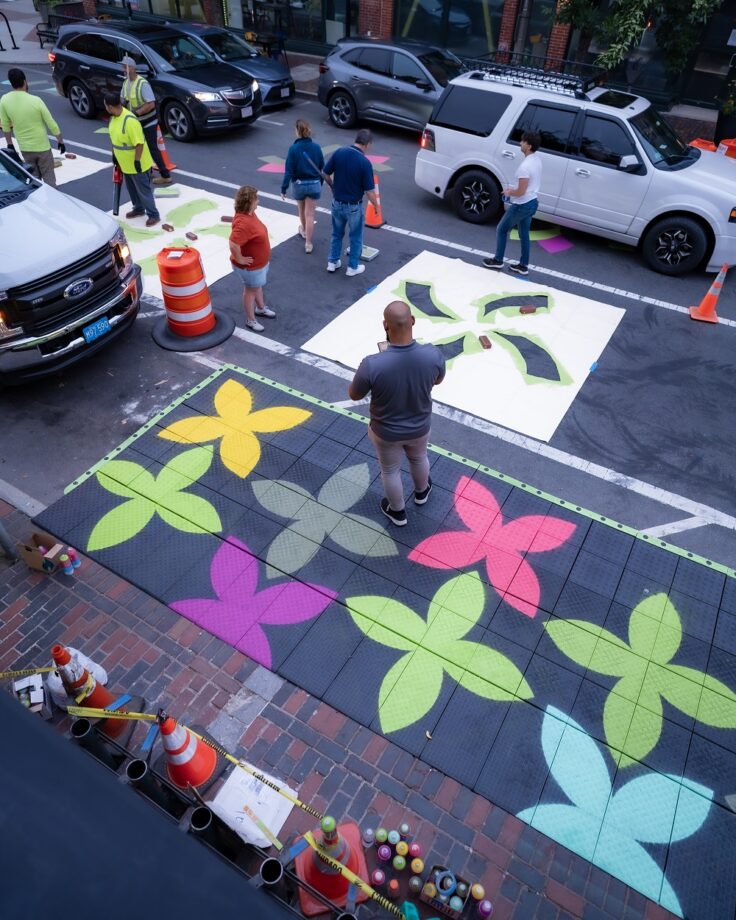September 01, 2023
This Vibrant New Bus Stop is Uniting Public Transit with Nature and Art
Public art has the power to transform civic spaces, foster shared community engagement, and celebrate the unique histories of a place.
ITDP US manages the BostonBRT campaign that launched in 2013 to bring quality bus service to the region — learn more.
For public transit in particular, high-quality, immersive art and design projects at stations, on vehicles, and on city streets have the potential to greatly improve the experience of users, enhance the ride experience, and add a sense of identity, dignity, and vibrancy to our transport systems. With these ideals in mind, the Flower Walk project debuted this month in the city of Chelsea, Massachusetts (located just north of Boston) to demonstrate what is possible when communities, artists, and civic institutions come together to rethink their local bus infrastructure.
ITDP US worked in collaboration with a number of community and design organizations and local artists to develop the Flower Walk concept for a well-used MBTA bus stop at Broadway and Third Street in Chelsea that now features a level-boarding platform, new plantings and landscaping, hand-painted street designs, ergonomic seating, and much more. Flower Walk aims to be an immersive civic experience inspired by nature that also provides a joyful and comfortable public space for pedestrians, cyclists, and transit riders alike.

The centerpiece of Flower Walk is the 80-foot Zicla level boarding platform, a key element of BRT, that allows for quick and accessible passenger boarding, especially for people with disabilities, older people, children, and caregivers. The platform is complemented by an ergonomic and flower-art-adorned bench, along with colorful design patterns integrated along the intersection, sidewalk, and platform. These artistic touches by local artists not only connect the Flower Walk concept together but also bring attention to an everyday transit stop that is typically just functional and easily overlooked.
As part of the street transformation, eight trees native to the region were also installed in large-scale planters along the street. More than 170 perennials adorn neighboring planters, including native varieties and many species that attract pollinating insects. The selections were chosen and designed to create interest throughout the seasons, with blooms and bright colors present from summer through the fall and winter. The incorporation of these natural elements serves to enhance the streetscape in this central district while also providing crucial heat protection and a visual spark for a previously static intersection.


While public transit systems across the US experienced major disruptions during the COVID-19 pandemic, the American Public Transportation Association now reports that ridership is gradually climbing once again in 2023 — though still notably remaining below pre-pandemic levels. Bus systems in particular, both across the country and in the Boston metro area, are at a critical inflection point that demands more investment, resources, and innovation to ensure that they can provide essential transport services to the communities that rely on them the most.
ITDP’s Keeping Pace report, developed with LivableStreets Alliance, outlines the state of the Boston area’s bus system. Read it here.


Through cost-effective, collaborative, and vibrant pilot projects like the Flower Walk, there is ample potential to make public transport a much more attractive and appealing option for both existing and potential users. In the coming months, the Flower Walk team hopes to gather data-driven insights to demonstrate the installation’s impact by utilizing biometric tools that will analyze how people interact with it. With creative direction led by Ad Hoc Industries, the Flower Walk team is comprised of ITDP US, the City of Chelsea, La Colabrativa, the Human Architecture and Planning Institute (HAPI), StudioFul Designs, local artist Max Pro, Althea Northcross, and Available Light.
Encouraging urban drivers to shift to public transport is crucial to reducing urban emissions and making cities more livable for everyone.
Through creative partnerships like Flower Walk, transit systems have the potential to not just bring people to their destinations, but also serve as a destination themselves.
